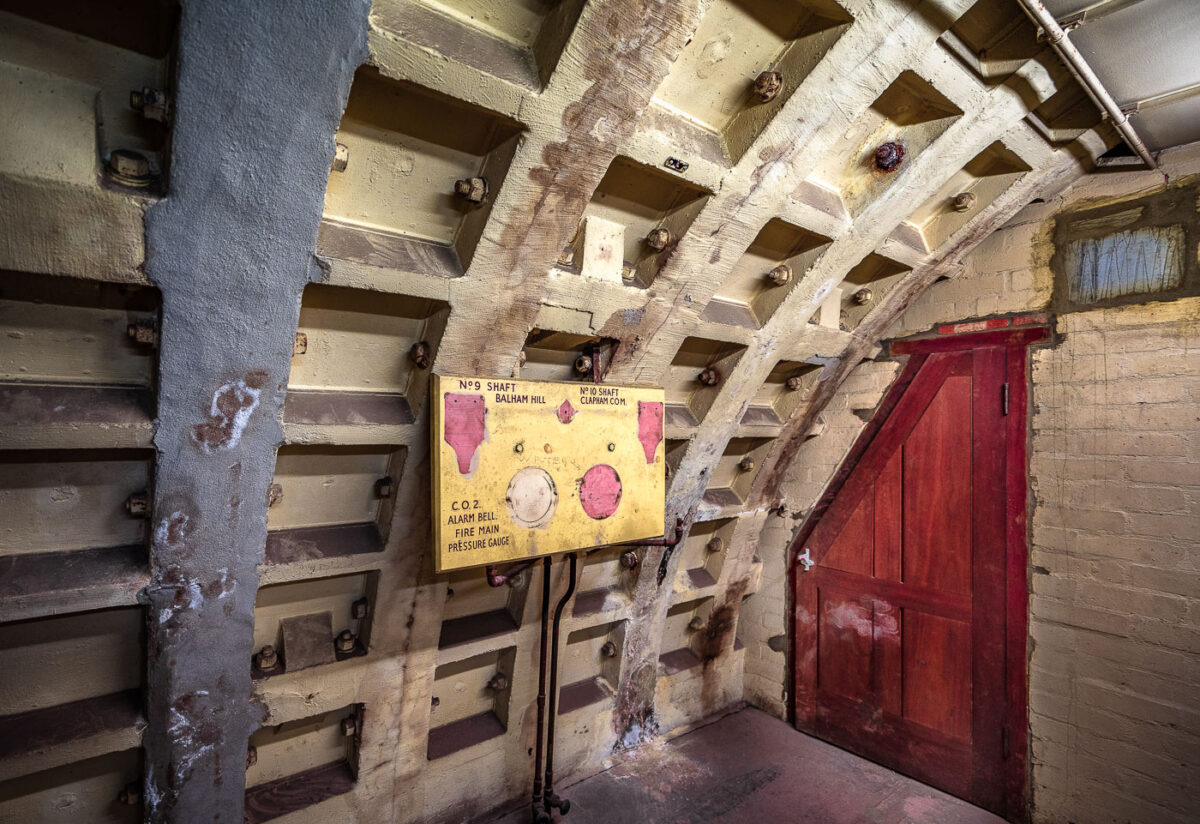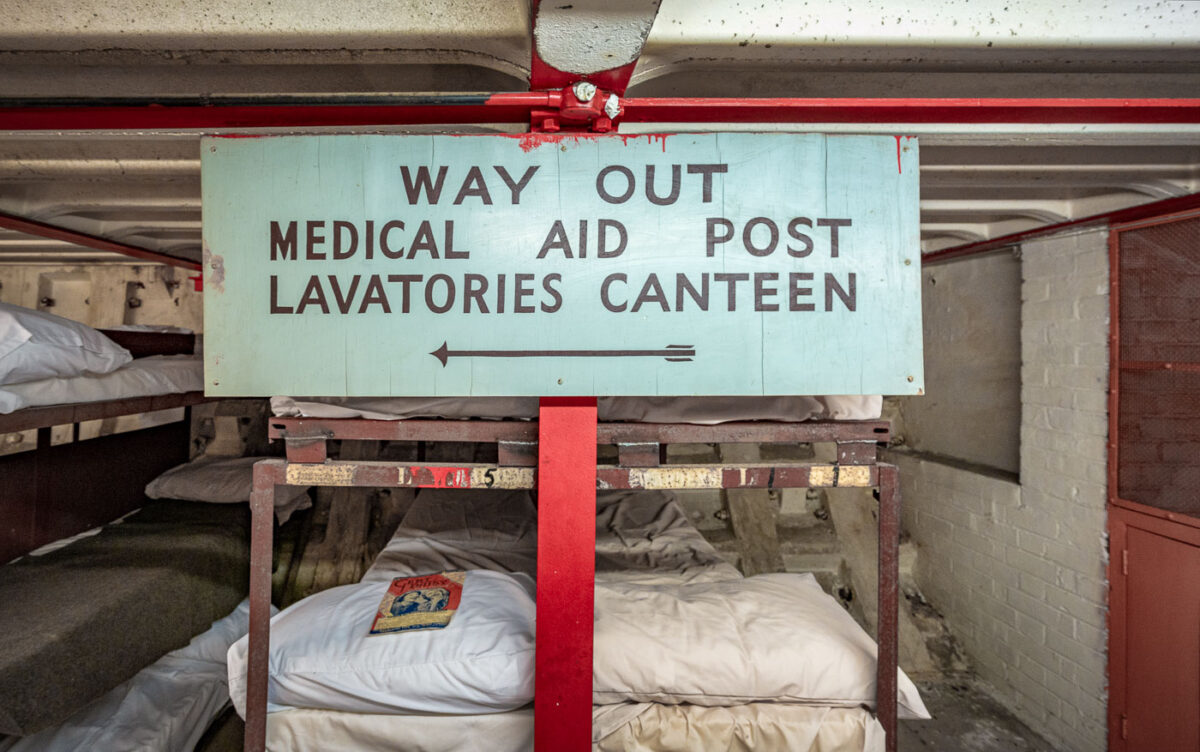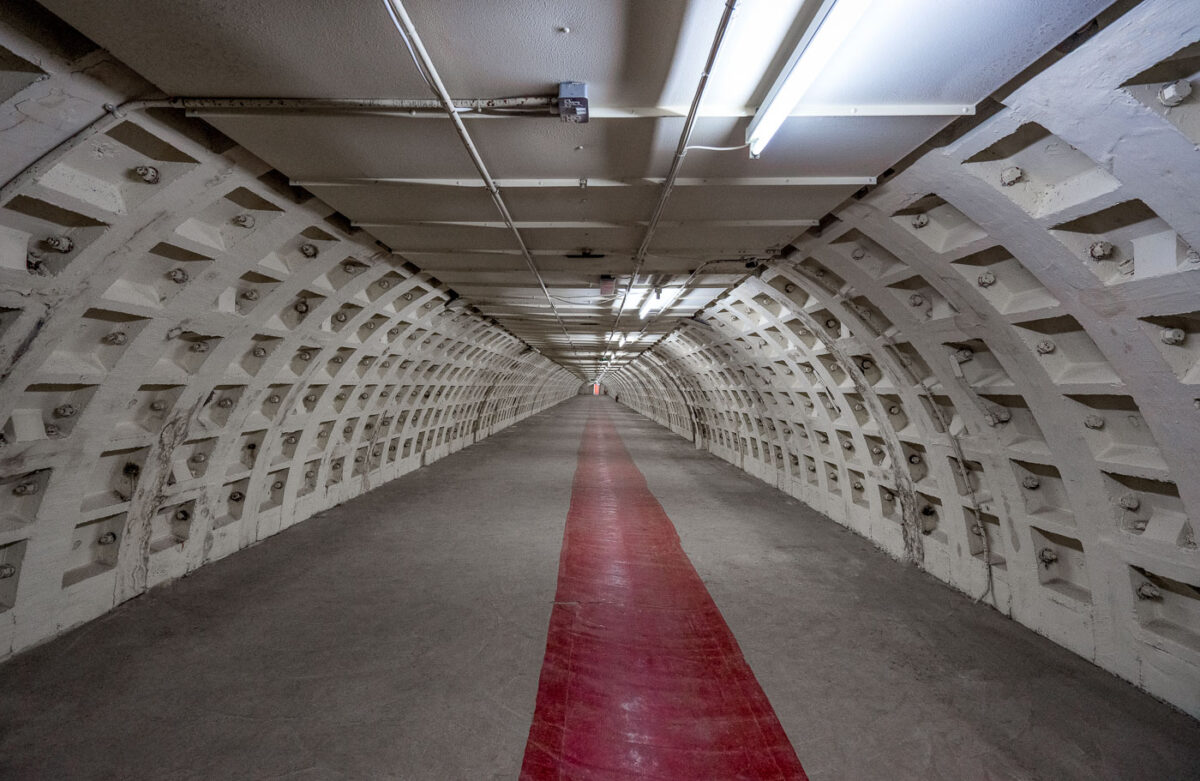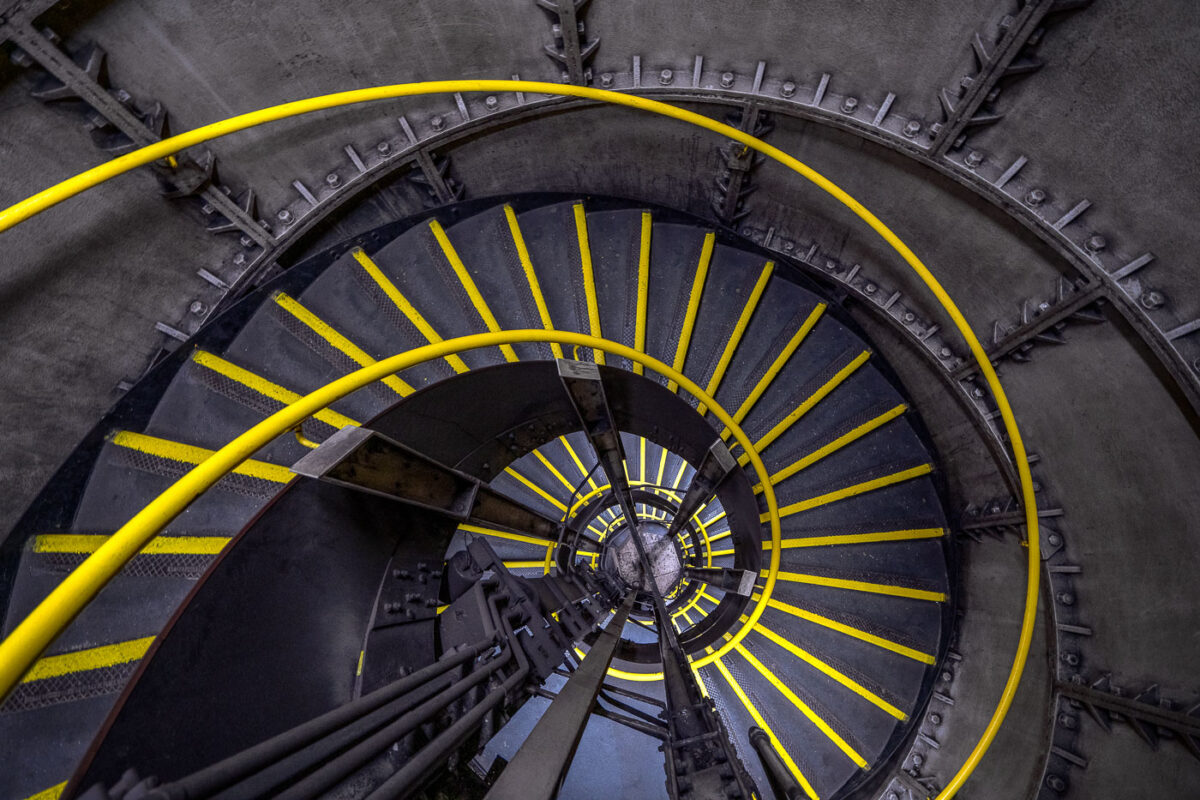
WWII Pressure Control Panel – Clapham South Deep-Level Shelter
A surviving pressure control and alarm panel from the Clapham South deep-level shelter, part of London’s extensive subterranean civil defence network built during World War II. Marked for Shafts 9 and 10 — Balham Hill and Clapham Common — this steel and cast-iron tunnel section reflects the industrial engineering that underpinned the capital’s wartime infrastructure.
The shelter, completed in 1942, was constructed 36 meters below ground to house up to 8,000 civilians during Luftwaffe air raids. Panels like this one were integral to the shelter’s life-support and safety systems, monitoring air pressure, fire mains, and CO₂ levels to maintain breathable air and protect against smoke or gas intrusion. The utilitarian design, reinforced bolted segments, and residual wartime paintwork remain as tangible reminders of Britain’s wartime engineering precision and the resilience of Londoners forced to seek refuge deep beneath the city’s streets.



